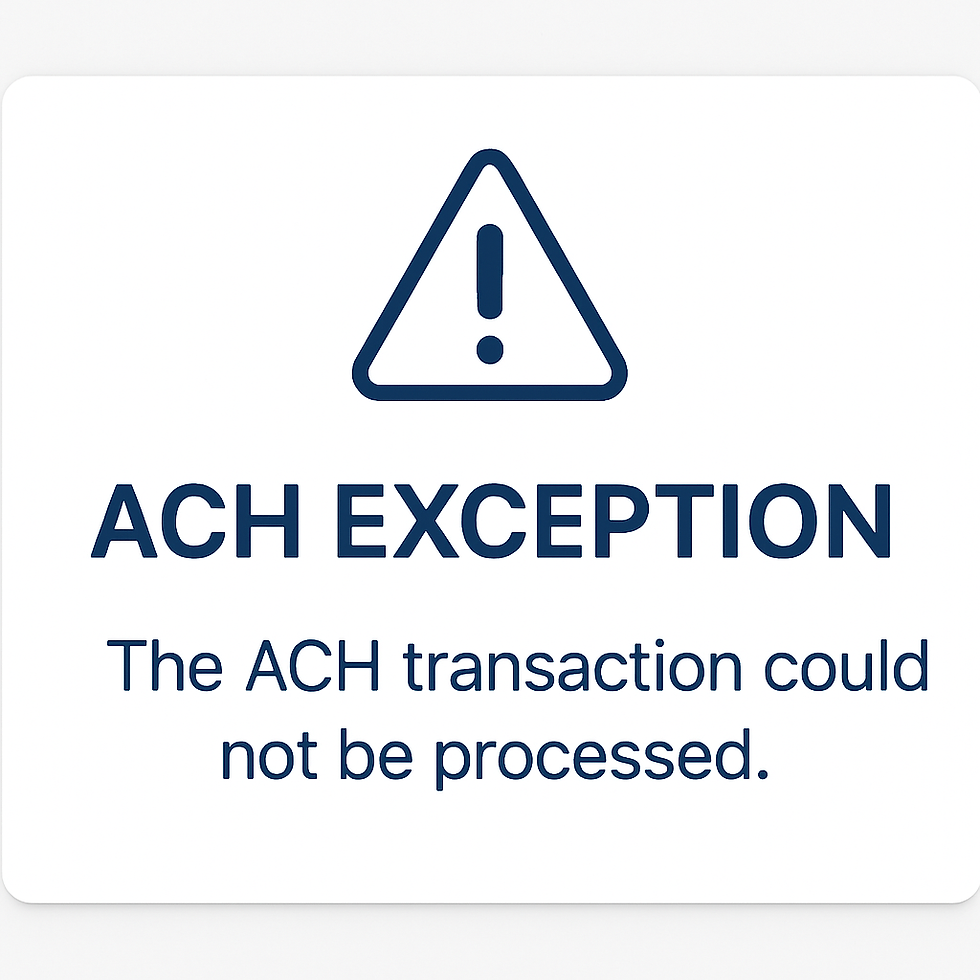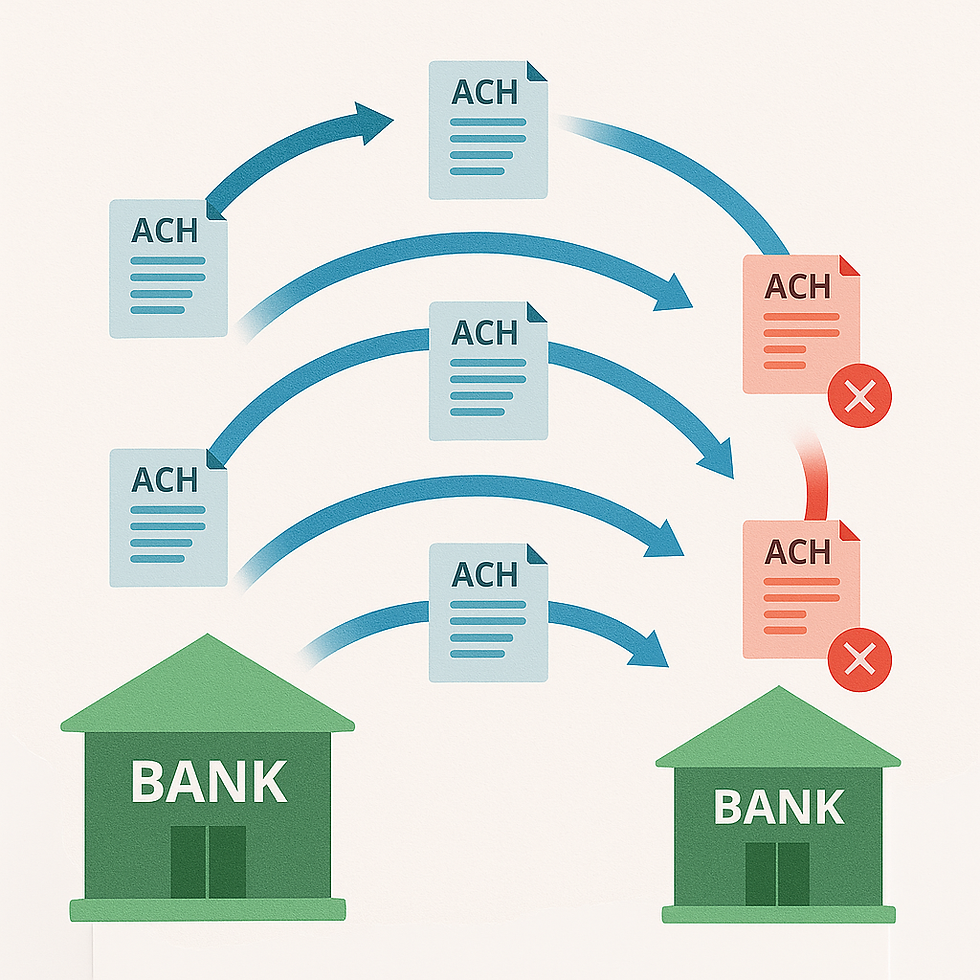What Is an ACH Return?
- Ian Berryman
- Aug 6
- 3 min read
Updated: Aug 7

An ACH return occurs when a payment sent through the Automated Clearing House (ACH) network cannot be processed and is sent back to the originator. Returns can happen for many reasons — incorrect account numbers, insufficient funds, closed accounts, or unauthorized transactions.
Whether you're sending payroll, vendor payments, or billing customers, it's important to understand how ACH returns work and how to handle them quickly.
How ACH Returns Work
When you send an ACH file to your bank, each transaction (called an “entry”) is transmitted to the recipient’s bank. If the receiving bank can’t complete the transaction, it flags the payment with a return code and sends it back to your bank — usually within 2 business days. Your bank will then provide you with the return information so you can make changes on your side.
If you receive a return, the transaction did not post to the recipient's account. This differs from a notification of change (NOC), another type of ACH exception, which indicates that the receiving bank was able to post the transaction but that certain details you used should be updated next time. A return is a hard stop and will need to be addressed before future transactions can be sent to the affected account.
Tip: ACH Pro has built in support for managing returns and NOCs
Common ACH Return Codes
Here are some of the most frequently encountered ACH return codes:
Code | Reason | Description |
R01 | Insufficient Funds | The recipient’s account didn’t have enough funds. |
R02 | Account Closed | The receiving account has been closed. |
R03 | No Account / Unable to Locate | The account number is invalid. |
R04 | Invalid Account Number | The number is not in a valid format. |
R05 | Unauthorized Debit to Consumer | A corporate entry was sent to a personal account. |
R29 | Corporate Customer Not Authorized | The business receiving the debit didn’t allow it. |
Each code gives you insight into what went wrong and whether it’s temporary (like R01) or requires correction (like R04). In most cases you need to contact the recipient before processing another transaction to their account. You can find a full listing of return codes in the NACHA Operating Rules and Guidelines.
How Long Do ACH Returns Take?
Most returns are sent by the recipient's bank within 2 banking days, but some — such as unauthorized debits to consumer accounts — can be returned up to 60 days later. This makes it especially important to secure proper authorization and use correct account data when sending the transaction.
Why ACH Returns Matter
Returns can cost you money, delay payments, and potentially lead to compliance issues with your bank. Too many returns — especially for authorization-related reasons — may result in penalties or additional scrutiny. Your bank may even revoke your ACH origination access. All of these issues can negatively affect your bottomline.
Also note that for returns unauthorized transactions, the recipient's bank or even NACHA may request a copy of the ACH authorization signed by the recipient to confirm that you are complying with NACHA rules that govern the ACH network.
Tip: ACH Pro can help you create and manage authorizations so you can confidently respond to requests
How to Prevent ACH Returns
Validate bank account numbers before sending ACH files
Send prenotes (zero-dollar test entries) before live transactions
Obtain signed authorization forms for all ACH debits
Take action on returns and NOCs before sending additional transactions to the same account
How ACH Pro Helps
ACH Pro helps reduce the risk of ACH returns with built-in features like:
Compliant NACHA files
Support for prenotes
Return code references to help you troubleshoot errors
Secure recipient management and account info storage
Built-in ACH authorizations
ACH returns are a normal part of electronic payments — but with the right tools and processes, you can minimize their impact on your business.
Start using ACH Pro free today to lower your return rates and spend less time chasing down failed payments.




Comments